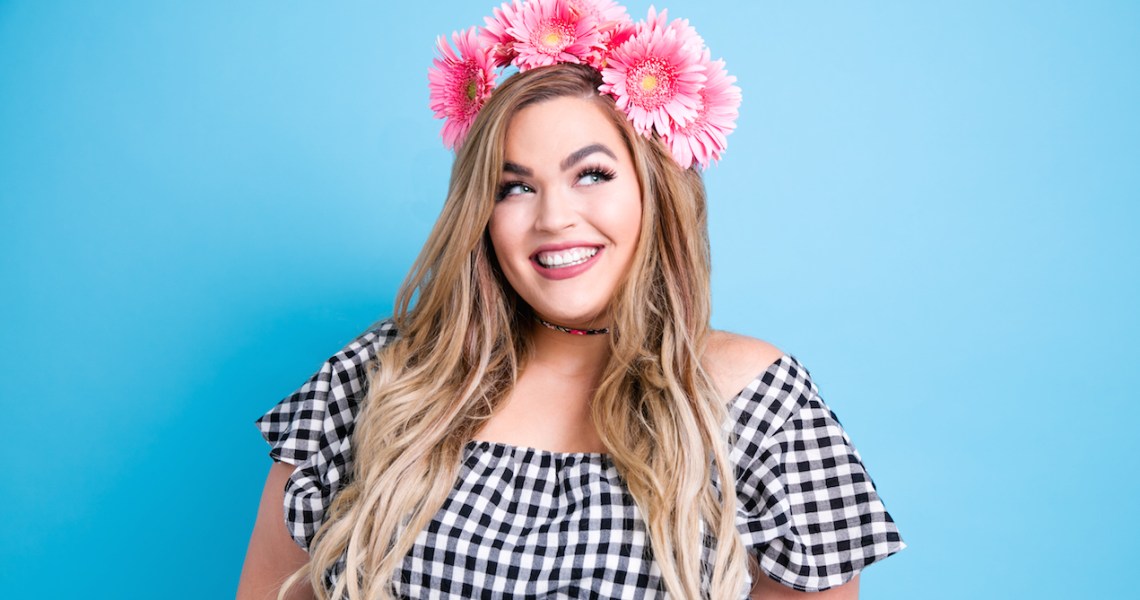To mirror what it has done in its apparel division, Target is hoping to innovate its beauty assortment with body-inclusive brands.
On April 5, Target debuted a new indie beauty brand called Love AnyBody in 500 stores (out of its 1,800 locations across the country). The line was developed by body-positive advocate and influencer Loey Lane (@loeybug), who has 559,000 Instagram followers and 1.7 million YouTube subscribers. It includes four products, including an anti-chafe stick and a stretch mark serum.
This closely follows the launch of Megababe in Target in late February. It, too, was founded by a body-positive influencer, Katie Sturino (@katiesturino), who has 297,000 Instagram followers. In April, Target will also welcome Queen V, an indie feminine-care brand with marketing and products meant to bring positivity to vaginal health. According to a fourth-quarter 2018 earnings call, Target’s beauty department makes up 20% of the company’s nearly $72 billion in annual sales.
“Our beauty area continues to benefit from our work to differentiate [our] Target assortment, especially in areas focused on naturals and diversity in beauty, hair and body care,” said Mark Tritton, evp and CMO in a first-quarter 2018 earnings call.
“We always want to make sure we are building and bringing an accessible assortment of products across categories, whether that’s beauty or apparel,” said Kate Decker, a Target spokesperson. “When we use that accessibility [ethos] as our core, we are then able to hone in on where those guests’ needs might be.”
While Target is starting to on-board more body-inclusive beauty brands, it’s been undergoing many other changes within its stores. The retailer has been busy trying to attract younger millennials and Gen-Zers through its private-label brands, according to a second-quarter 2018 earnings report. Among those recently launched are Wild Fable and Original Use, which offers styles in sizes XS to 4XL. Target has also expanded its wellness offerings to attract younger customers.
According to Lane and Sturino, Target was most interested in the fact that their brands filled a white space, not only from a product perspective but also from a brand-messaging one. Like Lane, Sturino said her influencer status was of less interest to Target than her brand’s value proposition as a body-inclusive brand.
Ad position: web_incontent_pos1
“The body-positivity thing is interesting because we are trying to solve comfort-related issues versus aesthetic [ones or flaws]. That plays into the body-positivity movement, where you are good as you are,” said Sturino.
Lane is promoting the line on Instagram and YouTube, with posts driving to LoveAnyBody.com.
Of course, it does help to have influencers behind a new type of product or category. When Target does consider teaming with an influencer, it evaluates a number of criteria, said Decker. That includes whether customers would view that influencer as a credible face to the category, the audience they reach, how they reach their audience, how large their reach is and whether they are focused on being inclusive.
Sturino said her Instagram followers are 95% women and mostly between 24 and 25 years old, while Lane’s following on YouTube and Instagram consists of 79% women, with the majority being 24 years old and younger, she said.
“When we work with Megababe or Love AnyBody, and they bring products that help a certain type of customer and we know there is a white space, that’s where it aligns and make sense,” said Decker. “We want them to bring an interesting take on a category.”
Ad position: web_incontent_pos2
Sign up for our new Glossy Beauty and Wellness Briefing, a weekly newsletter coming in April that will provide deep-dive analyses, emerging trends and insider insights in the growing beauty and wellness industries.




